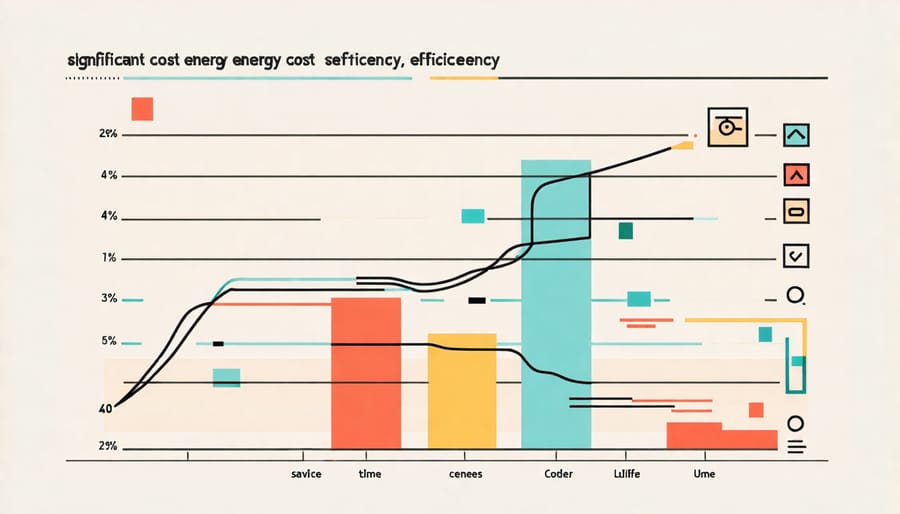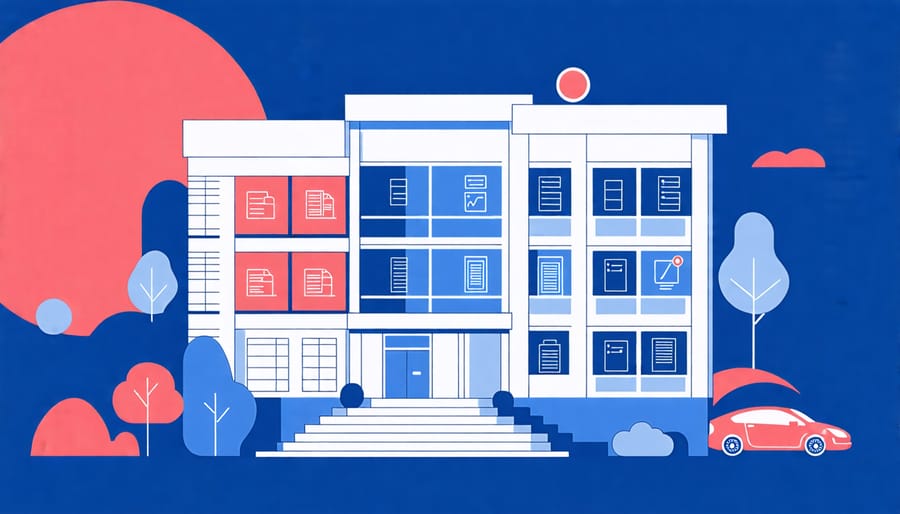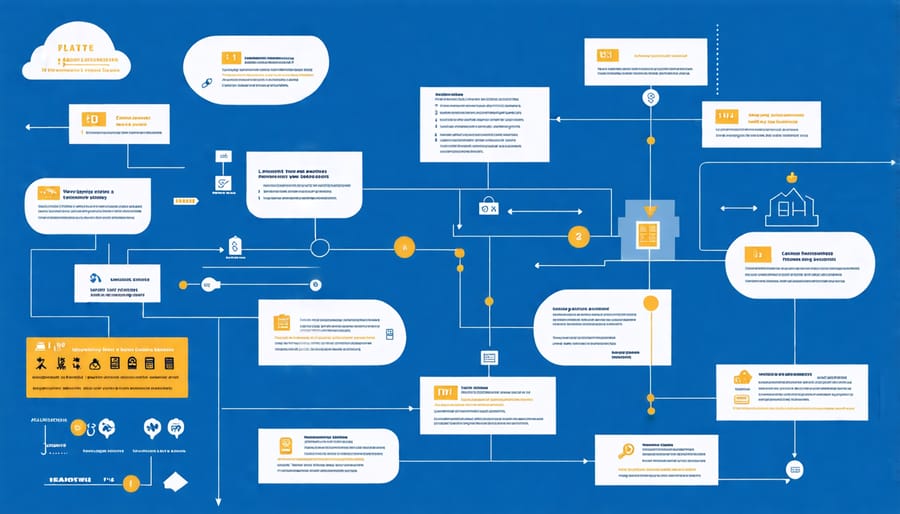Unlock the power of energy efficiency financing to transform your properties and projects. By leveraging innovative tools like Property Assessed Clean Energy (PACE) programs, Energy Service Agreements (ESAs), and On-Bill Financing, you can access upfront capital for efficiency upgrades with no out-of-pocket costs. Conducting a comprehensive energy audit is the first step to identify high-impact opportunities and build a compelling business case based on projected savings. Explore a range of financing options, from traditional loans to emerging models like Metered Energy Efficiency Transaction Structures (MEETS), to find the best fit for your unique needs and goals. Partner with experienced energy service companies (ESCOs) and financial institutions specializing in efficiency projects to streamline implementation and maximize returns. With the right financing strategy, energy efficiency investments deliver substantial economic, environmental, and competitive advantages.
The Business Case for Energy Efficiency

Reducing Operating Costs
One of the most compelling reasons to invest in energy efficiency is the potential for significant cost savings. By implementing energy-saving measures such as high-performance insulation, LED lighting, and efficient HVAC systems, building owners can dramatically reduce utility bills. These savings add up over time, offsetting the initial investment and providing a strong return on investment. In addition to lower energy costs, ultra energy efficient homes and buildings often have lower maintenance and repair costs. Energy-efficient equipment tends to last longer and require less frequent servicing, saving money on replacement parts and labor. Furthermore, by reducing the strain on HVAC systems, energy efficiency can extend the lifespan of these costly components. The combined savings on utilities and maintenance make a powerful financial case for prioritizing energy efficiency in both new construction and retrofits.
Increasing Asset Value
Energy efficient properties are increasingly desirable, commanding higher valuations and lease rates in the market. Studies show that buildings with green certifications, such as LEED or Energy Star, can fetch rental premiums of 2-6% and sale price premiums of 10-31% compared to non-certified properties. Tenants are willing to pay more for the improved comfort, health benefits, and lower utility costs associated with energy efficient spaces. Moreover, these properties tend to have lower vacancy rates and longer tenant retention. As companies prioritize sustainability and seek to reduce their carbon footprint, the demand for energy efficient buildings will only grow. Investing in energy efficient retrofits not only lowers operating costs but also positions properties to capitalize on this market trend and maintain a competitive edge.
Navigating Upfront Costs
The upfront costs of energy efficiency upgrades can be a significant barrier for many construction projects. However, there are various financing options available to help overcome this hurdle. From traditional bank loans to specialized energy efficiency financing programs, project managers have a range of tools to secure financing for construction projects focused on improving energy performance. By exploring these options and structuring the financing appropriately, it’s possible to minimize the initial capital outlay and spread the costs over time, aligning them with the energy savings generated by the upgrades. This approach can make efficiency investments more feasible and attractive for a wider range of projects.

Energy Efficiency Financing Options
Energy Service Agreements
Energy Service Agreements (ESAs) offer an innovative approach to financing energy efficiency projects with no upfront cost to the property owner. Under an ESA, an energy service company (ESCO) designs, installs, and maintains energy-saving upgrades, while the property owner pays for the improvements through a portion of the realized energy savings over a set contract term. This allows owners to implement efficiency measures without diverting capital from other priorities or taking on debt. ESCOs assume the performance risk, guaranteeing a minimum level of energy savings. If the upgrades fail to deliver the expected savings, the ESCO covers the shortfall. This model aligns the interests of the ESCO and property owner, ensuring that both parties benefit from maximizing energy savings. ESAs are well-suited for larger properties with significant energy costs, such as commercial buildings, hospitals, and educational facilities, where the potential savings can justify the long-term contract commitment.
Property Assessed Clean Energy (PACE)
Property Assessed Clean Energy (PACE) programs offer an innovative approach to financing energy efficiency projects. Through PACE, property owners can fund 100% of the upfront costs for qualifying improvements and repay the investment over time as a line item on their property tax bill. This mechanism allows owners to overcome the initial cost barrier while aligning repayment with the long-term benefits of reduced energy expenses.
PACE financing is secured by a lien on the property, not the individual borrower, which can enable better terms and transferability to new owners. Eligible measures typically include high-efficiency HVAC, lighting, insulation, windows, and renewable energy systems. By tapping into PACE programs where available, building professionals can expand project scope, improve ROI for clients, and drive wider adoption of efficiency solutions in the market.
Utility On-Bill Financing
Utility on-bill financing programs offer a compelling solution for funding energy efficiency upgrades. In these arrangements, utility companies cover the upfront costs of implementing energy-saving measures, such as installing high-efficiency HVAC systems, upgrading insulation, or retrofitting lighting. The property owner then repays the utility over time through a fixed charge on their regular utility bill. This approach minimizes initial capital outlays and aligns repayment with the energy savings realized from the improvements.
On-bill financing can be especially attractive for commercial properties, as it allows owners to enhance building performance and tenant comfort without diverting funds from other priorities. Utility programs often feature low-interest rates and extended repayment terms, making projects cash flow positive from day one. Additionally, the repayment obligation typically stays with the property rather than the owner, facilitating efficiency investments even if a sale is anticipated. While specific program details vary, on-bill financing is an innovative tool for overcoming financial barriers to energy efficiency.
Energy Efficiency Loans
Energy efficiency loans are specialized financing products designed to support investments in energy-saving upgrades and renewable energy projects. These loans often feature more attractive terms compared to standard financing options, recognizing the long-term value and reduced risk associated with energy efficiency improvements. Many lenders offer lower interest rates, extended repayment periods, and higher borrowing amounts for qualifying projects.
To access these loans, borrowers typically need to demonstrate the energy savings potential of their proposed upgrades, often through an energy audit or engineering analysis. Lenders may also require the use of approved contractors and equipment to ensure quality installations. By securing an energy efficiency loan, building owners and developers can overcome upfront cost barriers and align repayment with the expected savings generated by the improvements. This approach enables immediate positive cash flow while enhancing property value and tenant comfort. When exploring energy efficiency loans, it’s essential to compare offers from multiple lenders and carefully review terms to find the best fit for each project’s unique needs and goals.
Choosing the Right Financing Strategy

Key Considerations
When evaluating financing options for energy efficiency projects, several key factors should be considered. The size and scope of the project will significantly impact the type of financing that is most appropriate. Smaller projects may be able to rely on internal funds or utility incentives, while larger initiatives often require external financing. The property type is another important consideration, as different building uses and ownership structures may have access to different financing tools. For example, government buildings and non-profits may qualify for specialized grant programs.
The financial strength and creditworthiness of the property owner or developer is also critical, as this will determine the terms and rates available for financing. Projects with strong credit may be able to secure more favorable interest rates and longer repayment terms. The expected energy savings and return on investment should be carefully analyzed, as this will be a key factor in securing financing and demonstrating the value of the project. Working with experienced professionals to boost energy efficiency and accurately project savings can help make a compelling case to lenders or investors. By carefully weighing these factors, property owners and developers can identify the most viable and cost-effective financing solutions for their energy efficiency initiatives.
Investing in energy efficiency is a smart business decision that can pay dividends for years to come. By exploring the various financing options available, from traditional loans to innovative models like PACE and on-bill financing, construction professionals and property owners can find a solution that fits their unique needs and budget. The case for energy efficiency is clear – reduced operating costs, increased property value, and a healthier, more comfortable built environment. As the construction industry continues to evolve and prioritize sustainability, those who embrace energy efficiency will be well-positioned for success. Whether you’re a developer, architect, engineer, or building owner, now is the time to investigate the financing tools at your disposal and take action. By making energy efficiency a priority in your projects, you’ll not only benefit your bottom line but also contribute to a greener future for generations to come.

